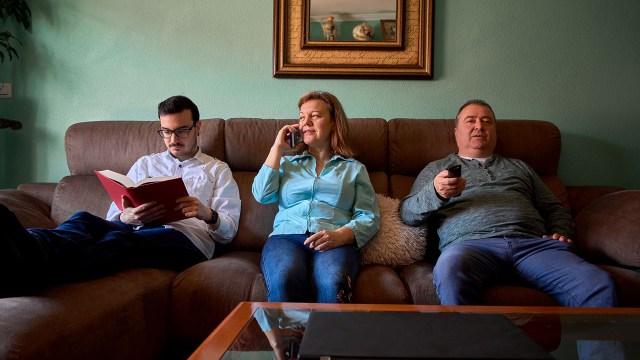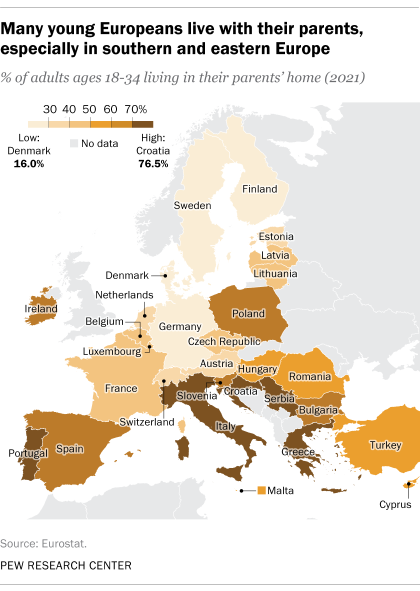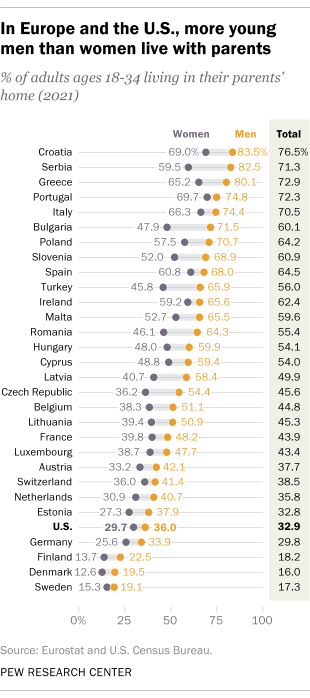
One-in-three U.S. adults ages 18 to 34 live in their parents’ home, according to U.S. Census Bureau data from 2021. In a Pew Research Center survey conducted that same year, Americans were more likely to see young adults living with their parents as a bad thing than a good thing for society.
Pew Research Center conducted this analysis as an update to a May 2016 analysis about the share of adults ages 18 to 34 living in their parents’ home in the United States and abroad. For this analysis, we used 2021 data from the U.S. Census Bureau and Eurostat, a European statistical agency.
The Eurostat data is gathered by individual countries under a shared framework for data collection; reporting practices may differ slightly from the Census Bureau’s protocols. We have limited this analysis to a snapshot in time rather than included historical trends because data collection and reporting practices have changed over time in some European countries. The change in reporting means that results from 2021 are not comparable with older data for certain countries.

However, young adults in much of Europe are even more likely than their U.S. counterparts to live in their parents’ home, according to an analysis of living arrangements in more than two dozen European countries. This is consistent with previous Pew Research Center work that used 2014 data.
In 24 of the 29 European countries studied, more than one-in-three adults ages 18 to 34 lived in their parents’ home in 2021, according to the statistical agency Eurostat. That includes more than seven-in-ten in Croatia (77%), Greece (73%), Portugal (72%), Serbia (71%) and Italy (71%). On the other end of the spectrum, fewer than one-in-five young adults in the Scandinavian countries of Finland (18%), Sweden (17%) and Denmark (16%) live with their parents.

Overall, countries in southern and eastern Europe tend to have higher rates of young adults living in their parents’ home than countries in northern and western Europe, a difference that may reflect both cultural factors, such as social norms and family ties, and structural factors, such as housing markets and welfare systems.
Both in the United States and Europe, young men are more likely than young women to live in their parents’ home. In 2021, 36% of young men in the U.S. lived in their parents’ home, compared with 30% of young women. The same pattern appears in every European country studied.
In a handful of European countries, including Ireland and Denmark, the gender difference is comparable to that in the U.S. However, in 16 European countries analyzed, the share of young men living in their parents’ home is more than 10 percentage points higher than the share for young women. The gender gap is widest in Bulgaria, where 72% of young men and 48% of young women live in their parents’ home.
Note: This is an update of a post originally published on May 24, 2016.